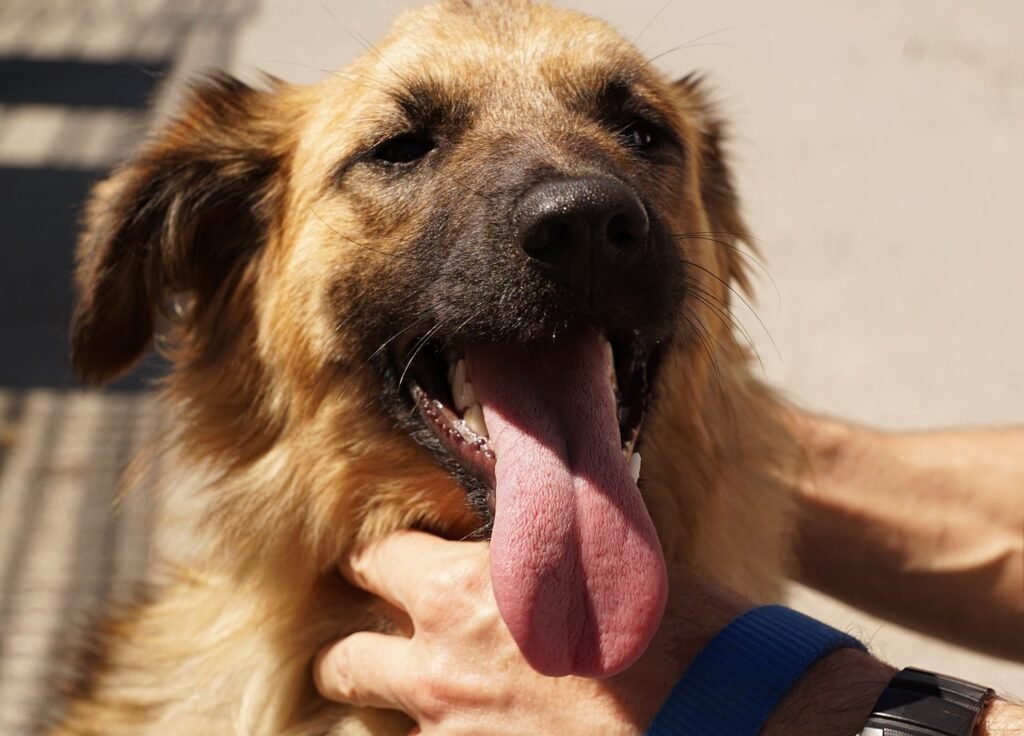As dogs age, they may experience changes in their respiratory system, leading to increased panting and difficulty breathing. This can be concerning for pet owners, but there are steps that can be taken to help older dogs pant less.
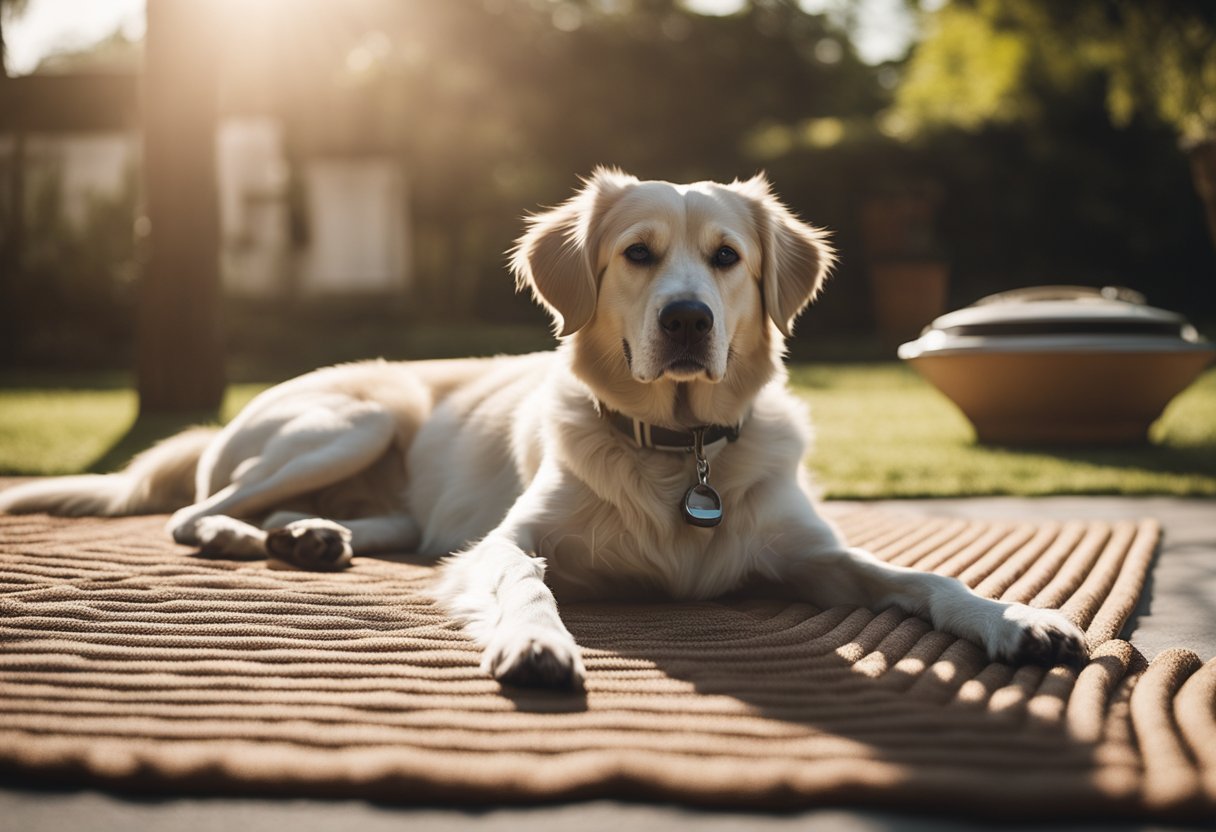
One of the most important things to consider is weight management. Older dogs are more prone to weight gain, which can put extra stress on their respiratory system. Maintaining a healthy weight through proper diet and exercise can help reduce panting and improve overall health.
Another factor to consider is the environment. Hot and humid conditions can make it difficult for dogs to breathe, leading to increased panting. Providing a cool and well-ventilated space for your older dog can help reduce panting. Additionally, avoiding strenuous exercise during the hottest parts of the day can also be beneficial.
Understanding Panting in Older Dogs
As dogs age, they may experience changes in their breathing patterns. One common issue that many senior dogs face is heavy panting. Panting is a normal physiological process that helps dogs regulate their body temperature. However, excessive panting can be a sign of an underlying health issue.
Senior dogs may pant more frequently due to a variety of reasons. Some of the common causes of heavy panting in older dogs include pain, anxiety, and respiratory diseases. Pain can cause dogs to pant as a way to cope with discomfort. Anxiety can also lead to heavy panting, particularly at night. Respiratory diseases such as chronic obstructive pulmonary disease (COPD) and congestive heart failure (CHF) can cause dogs to pant heavily due to difficulty breathing.
Fortunately, there are several ways to help older dogs pant less. One of the best ways to reduce panting in senior dogs is to keep them cool and comfortable. This means providing them with a cool and well-ventilated living space, avoiding strenuous activities during hot weather, and providing plenty of water.
Another way to help older dogs pant less is to manage their pain and anxiety. This can be achieved through medication, physical therapy, and behavioral training. For example, providing a comfortable and supportive bed can help reduce joint pain and improve sleep quality.
In addition, regular veterinary check-ups are important for detecting and treating underlying health issues that may contribute to heavy panting in older dogs. Senior dogs should be examined by a veterinarian at least twice a year to ensure their health and well-being.
Overall, understanding the causes of heavy panting in older dogs and taking steps to manage it can improve their quality of life and help them age gracefully.
Common Causes of Excessive Panting

Older dogs tend to pant more than younger dogs. Panting can be a sign of a serious health issue or simply a normal response to environmental factors. Understanding the common causes of excessive panting in older dogs can help pet owners identify potential problems and seek appropriate treatment.
Age-Related Health Issues
As dogs age, they become more susceptible to certain health issues that can cause excessive panting. For example, respiratory problems such as chronic obstructive pulmonary disease (COPD) or congestive heart failure can make it difficult for dogs to breathe, leading to panting. Other age-related issues that can cause panting include:
- Arthritis or joint pain
- Cognitive dysfunction
- Dental problems
- Kidney or liver disease
- Cancer
If an older dog is panting excessively and also showing other signs of illness, such as lethargy or loss of appetite, it’s important to take them to a veterinarian for a check-up.
Environmental Factors
Environmental factors can also contribute to excessive panting in older dogs. For example, hot weather or high humidity can make it difficult for dogs to regulate their body temperature, leading to panting. Other environmental factors that can cause panting include:
- Stress or anxiety
- Loud noises or sudden movements
- Exposure to toxins or chemicals
- Poor air quality
Pet owners can help reduce panting caused by environmental factors by providing a comfortable and safe living environment for their older dogs. This can include providing a cool, well-ventilated space during hot weather or using calming techniques to reduce stress and anxiety.
Overexertion and Exercise
Overexertion and exercise can also cause excessive panting in older dogs. While regular exercise is important for maintaining a dog’s health, older dogs may not be able to handle the same level of physical activity as younger dogs. Overexertion can lead to panting, as well as other issues such as dehydration, muscle strain, or joint pain.
Pet owners should monitor their older dogs during exercise and make sure they are not pushing themselves too hard. It’s important to provide plenty of water and rest breaks during exercise, and to adjust the level of activity based on the dog’s individual needs and abilities.
By understanding the common causes of excessive panting in older dogs, pet owners can take steps to keep their furry friends healthy and comfortable. If panting persists despite efforts to address potential causes, it’s important to seek veterinary attention to rule out any underlying health issues.
Effective Cooling Strategies

Older dogs tend to pant more frequently, especially during hot weather. Panting is a natural way for dogs to cool down, but excessive panting can lead to dehydration, heat exhaustion, and other health problems. Fortunately, there are several effective cooling strategies that can help reduce panting in older dogs.
Proper Hydration
Proper hydration is essential for keeping older dogs cool and reducing panting. Dogs should have access to clean, fresh water at all times, and owners should encourage them to drink frequently. Adding ice cubes to the water bowl can also help keep the water cool and refreshing.
Use of Cooling Beds
Cooling beds for old dogs are designed to regulate body temperature and provide relief from the heat. These beds are typically made with cooling gel or other materials that absorb body heat and dissipate it away from the dog’s body. Some cooling beds also have elevated designs that allow for better air circulation and heat dissipation.
Maintaining a Cool Environment
Maintaining a cool environment is another effective way to reduce panting in older dogs. Owners should keep their homes cool by using air conditioning or fans, and avoid taking their dogs outside during the hottest parts of the day. Dogs should also have access to shaded areas when outside, and owners should avoid leaving them in hot cars or other enclosed spaces.
In conclusion, proper hydration, the use of cooling beds, and maintaining a cool environment are all effective cooling strategies that can help reduce panting in older dogs. By implementing these strategies, owners can help keep their dogs comfortable and healthy during hot weather.
Managing Senior Dog Anxiety

As dogs age, they may experience anxiety due to various reasons such as cognitive dysfunction, separation anxiety, or fear of loud noises. Anxiety can cause excessive panting in senior dogs, which can be uncomfortable and distressing for them. Fortunately, there are various ways to manage senior dog anxiety and help them pant less.
Night Time Routine
Establishing a consistent night time routine can help alleviate anxiety in senior dogs. It is essential to create a calming and relaxing environment for your furry friend. Consider playing soft music or using a white noise machine to drown out any outside noises that may trigger anxiety. Ensure that your senior dog’s sleeping area is comfortable and cozy, with a soft bed and blankets.
Additionally, it is important to establish a regular bedtime routine. Senior dogs thrive on routine, and having a consistent bedtime can help them feel secure and relaxed. A routine can include a final potty break, a calming walk, and a bedtime treat.
Comforting Techniques
There are various techniques that can be used to comfort senior dogs and help them manage anxiety. One such technique is massage therapy. Massaging your senior dog can help them relax and reduce anxiety. Focus on areas such as the shoulders, neck, and chest, as these areas tend to hold tension in dogs.
Another technique is the use of calming supplements. Natural supplements such as chamomile, valerian root, and passionflower can help alleviate anxiety in senior dogs. Consult with your veterinarian before giving your senior dog any supplements, as they may interact with existing medications.
In conclusion, managing senior dog anxiety is crucial in helping them pant less. Establishing a consistent night time routine and using comforting techniques such as massage therapy and calming supplements can help reduce anxiety in senior dogs.
Health Interventions
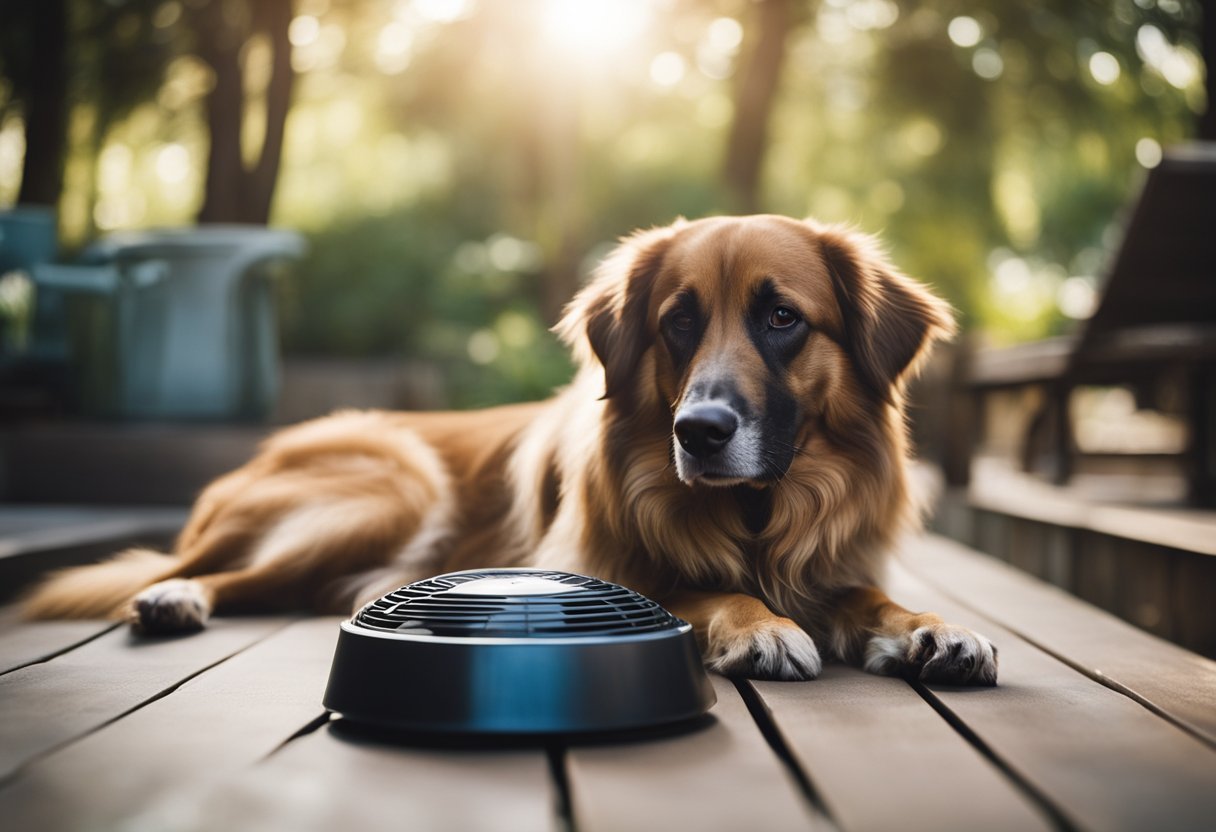
Older dogs may experience increased panting due to various health conditions. Fortunately, there are several health interventions that can help reduce panting in older dogs.
Veterinary Care
Regular veterinary check-ups are essential to maintain the overall health of older dogs. During check-ups, veterinarians can identify any underlying health conditions that may cause panting. They can also recommend appropriate treatments to manage these conditions. For example, if an older dog has dental disease, the veterinarian may recommend a dental cleaning or tooth extraction to alleviate pain and discomfort. Regular check-ups can also help detect and treat conditions such as heart disease, respiratory disease, and arthritis, which can contribute to panting in older dogs.
Medications and Supplements
Medications and supplements can also help reduce panting in older dogs. For example, anti-anxiety medications such as benzodiazepines and tricyclic antidepressants can help reduce anxiety-related panting. Additionally, supplements such as melatonin and L-theanine can help calm anxious dogs and reduce panting. It is important to consult with a veterinarian before administering any medications or supplements to older dogs, as some may have adverse effects or interact with other medications.
In addition to medications and supplements, older dogs may benefit from dietary changes. For example, switching to a low-sodium diet can help manage heart disease and reduce panting. Similarly, adding omega-3 fatty acids to a dog’s diet can help reduce inflammation and improve respiratory function, which can also reduce panting.
Overall, a combination of veterinary care, medications and supplements, and dietary changes can help reduce panting in older dogs. It is important to work closely with a veterinarian to identify and manage any underlying health conditions that may contribute to panting.
Diet and Nutrition
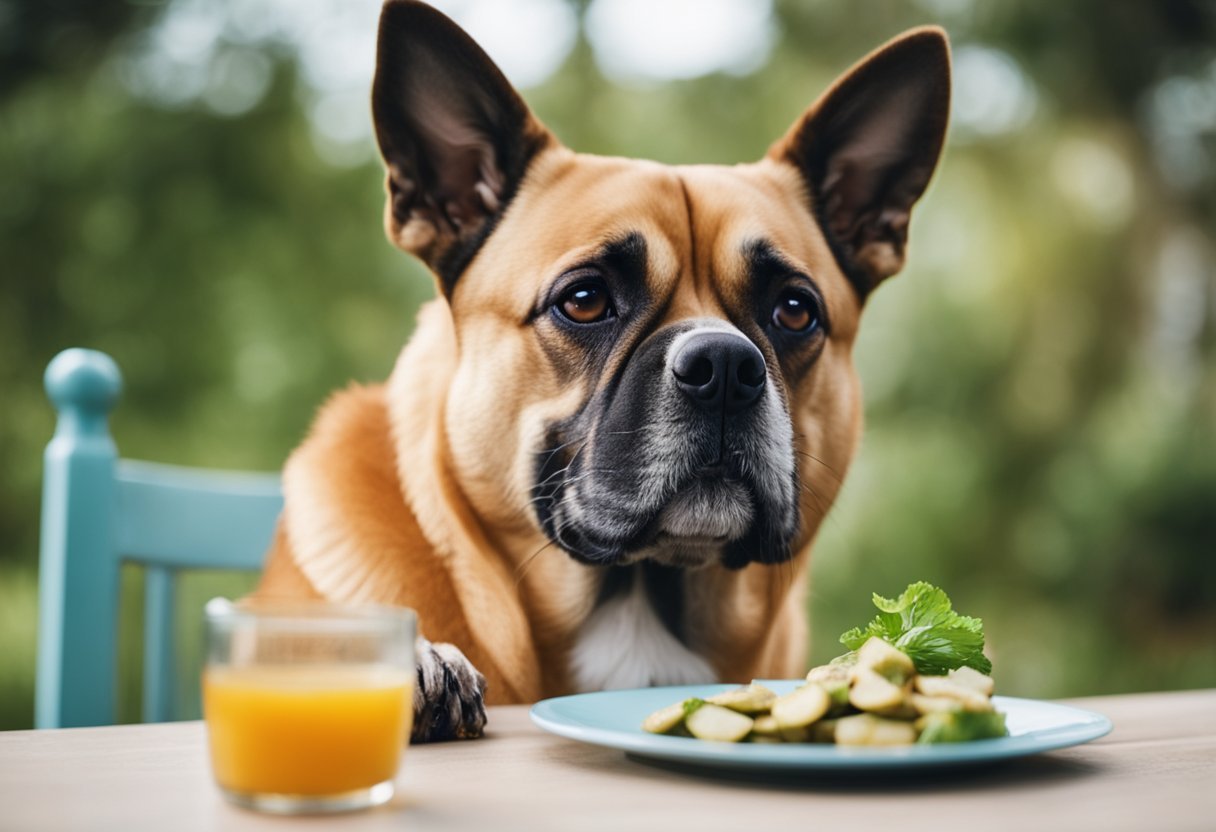
Appropriate Diet for Older Dogs
As dogs age, their dietary needs may change, and providing an appropriate diet can help reduce excessive panting. Older dogs may benefit from a diet that is lower in calories to prevent weight gain, as obesity can exacerbate respiratory issues. Additionally, incorporating high-quality protein sources in their diet can help maintain muscle mass and support overall health.
It’s important to consult with a veterinarian to determine the specific nutritional requirements for an older dog. They may recommend a balanced diet that includes essential nutrients such as long-chain omega-3 polyunsaturated fatty acids, which can help reduce inflammation associated with aging and joint issues. Omega-6 fatty acids can also promote skin health, addressing common dermatological concerns in senior dogs.
By providing a well-balanced and appropriate diet, pet owners can support their older dogs’ overall health and potentially reduce excessive panting, contributing to their well-being in their later years.
Exercise and Weight Management

Regular, Low-Impact Exercise
Older dogs need regular exercise to help them maintain their health and reduce the risk of obesity, which can cause respiratory problems and increase panting. However, high-impact activities like running or jumping can put too much stress on an older dog’s joints. Therefore, it is recommended to engage older dogs in low-impact activities like walking, swimming, or playing fetch. These activities can help maintain muscle mass, improve cardiovascular health, and keep the dog’s weight in check.
Weight Control Strategies
Weight management is crucial for older dogs to prevent respiratory issues and reduce panting. A healthy diet, portion control, and regular exercise are key to maintaining a healthy weight. The diet should be rich in nutrients and low in calories. Older dogs may also benefit from senior-specific diets that are formulated to meet their specific nutritional needs. Table scraps and high-calorie treats should be avoided to prevent weight gain.
In addition to a healthy diet, portion control is also important. Overfeeding can lead to obesity, which can cause respiratory problems and increase panting. Owners should consult with their veterinarians to determine the appropriate portion sizes for their dogs based on their age, weight, and activity level.
In conclusion, regular, low-impact exercise and weight management strategies are crucial for helping older dogs pant less. A healthy diet, portion control, and regular exercise can help maintain muscle mass, improve cardiovascular health, and keep the dog’s weight in check.
Monitoring and Regular Check-Ups
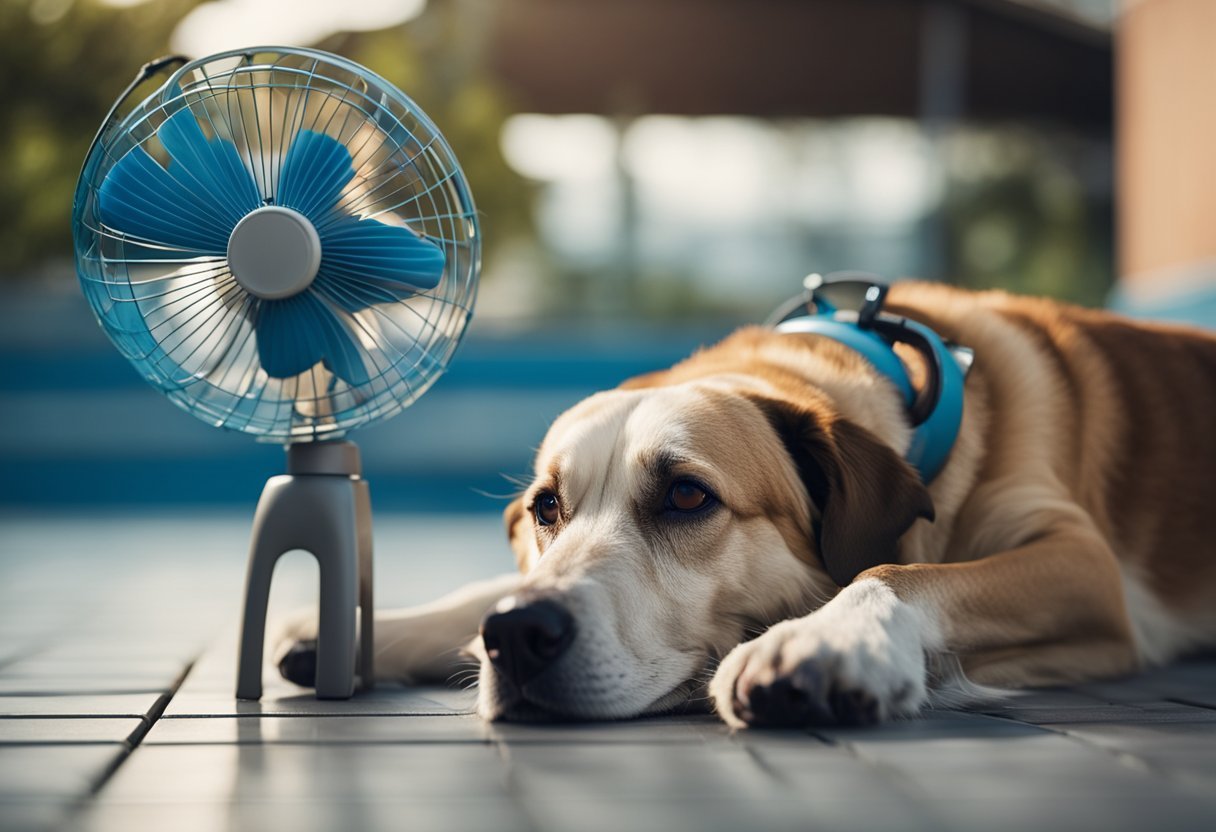
Routine Veterinary Visits
One of the most important things an owner can do to help their older dog pant less is to schedule routine veterinary visits. These visits can help identify any underlying health conditions that may be causing excessive panting. During these visits, the veterinarian will perform a physical exam, take a thorough medical history, and may recommend additional diagnostic tests, such as blood work or X-rays. By catching any health issues early on, the veterinarian can provide the appropriate treatment to help manage the condition and reduce the symptoms, including excessive panting.
At-Home Monitoring
In addition to routine veterinary visits, owners can also monitor their older dog’s panting at home. This can help identify any changes in panting behavior and alert the owner to any potential health issues. Owners should keep track of how often their dog pants, how long each episode lasts, and any triggers that may be causing the panting, such as exercise or anxiety. Owners should also monitor their dog’s breathing rate and effort, as well as any changes in their dog’s appetite, thirst, or energy levels. Any significant changes in these behaviors should be reported to the veterinarian right away.
Overall, monitoring and regular check-ups can help owners identify any underlying health conditions that may be causing excessive panting in their older dog. By catching any health issues early on, the appropriate treatment can be provided to help manage the condition and reduce the symptoms, including excessive panting.

